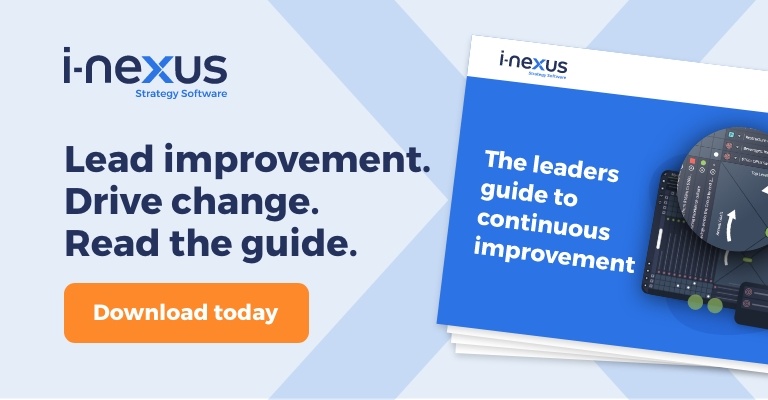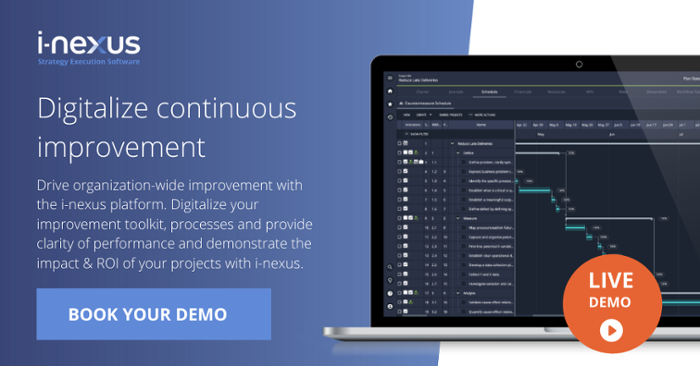Synonyms, semantics, subtle differences. The world of continuous improvement is littered with these, but whether it’s DMAIC, Six Sigma or Lean, there are logical phases in each approach to improvement. These are the questions you need to ask yourself, no matter the improvement framework.
Written by: Nigel Richardson
Today I would like to challenge your understanding of the differences between DMAIC, Lean and Six Sigma.
Not necessarily to be destructive, but more so because there is a set of logical phases to any improvement project, regardless of the framework applied.
In fact, this blog’s goal is to ensure the exam questions of each methodology are answered for each phase.
Choosing your Continuous Improvement Path
In my experience these exam questions never change, even if the debate about the semantics of the phases continues.
The level of tools and rigor you apply is based on your judgement on rigor vs stakes vs urgency.
DMAIC
DMAIC is a data-driven quality approach used in continuous improvement.
While it is a core part of Six Sigma, it can also be implemented alone.
DMAIC is an acronym for five stages:
- Define
- Measure
- Analyze
- Improve
- Control
In any case, these are the questions and tools you can apply as you run through a project using DMAIC.
| Phase | The exam question(s) | The tool(s) |
| Define |
|
|
| Measure |
|
|
| Analyze |
|
|
| Improve |
|
|
| Control |
|
|
Six Sigma
Six Sigma is a statistical, data-driven approach to continuous improvement which focuses on eliminating defects in processes, services and product, process or service.
These are the questions and tools you can apply as you run through a project using Six Sigma as your framework.
| Six Sigma term | The exam question(s) | The tool(s) |
|
Process capability Also known as: Cp and Cpk |
Compares the “voice of the process” to the Voice of the Customer. The question is of how much variation sits within the customer specification limits. The more of the variability that sits within the limits to better the process capability. |
|
|
DPMO Also known as: Defects per million opportunities |
An alternate representation of process capability. Based on the current process capability, how many defects per million would be produced? |
|
|
Measurement system analysis Also known as: MSA |
Evaluating your measurement system against its:
|
It is important to understand how robust the measures are behind the measurement system of the key KPIs you are trying to improve. Sometimes you will need a round of improvement on how your information is collected. |
Lean Management
In any improvement project you undertake, once you are clear on your current state and the problems you need to solve appear, you will quickly start to identify opportunities to apply some of these predefined Lean interventions and principles.
Below is an overview of some of the more frequently applied contents of the Lean toolbox, I have included an explanation of a couple of terms from this tool box that I also mentioned above.
| Lean intervention | Summary | When it should be applied |
|
5S Also known as: Sort, Set in Order, Shine, Standardize, Sustain. |
A comprehensive approach to workplace management comprising of the activities of Sort, Set in Order, Shine, Standardize, Sustain. |
Where you have root causes for waste concerned with the quality of the working area with issues such as excessive movement or missing kit / tools. 5S is also a very empowering exercise to facilitate in an area. It is very tangible and serves as a great first step if you are working with an area for a period of time. |
| The visual workplace | A basic principle of the work environment visually reinforcing the desired ways of working and standards with any deviations obvious at a glance. |
Visual display – abnormalities stand out, performance can be understood at a glance. status boards, shadow boards, andon lights. Visual controls – clear visual communication of instructions (e.g. traffic lights). |
| Kanban |
A mechanism of simple signals that regulate the flow of product in a pull production system. Often a Kanban board is used for planning work and tracking delivery. |
As part of an effort to reduce inventory, working capital and spend up the time taken to produce product in a waste free way. Kanban’s as a method for work management is a key facet of Agile software development and many other forms of delivery in the present day. |
| Takt |
A German word meaning rhythm or time. It is a way of converting demand into an expected per unit processing rate. |
Remember Takt is a Voice of the Customer measure – it represents the demand required not the performance that can be done. This can be used when you are designing processes that support fulfilling a product of a service without bottle necks. |
| Product families | A way of segmenting your demand based on different clusters of process that are applied. | This can be used to define your value streams. |
| Demand profiles |
Segmenting your demand into 3 categories:
This is based on their volume and variability. |
|
| Theory of constraints and Pacemaker | The rate of a process must be synchronized across all processes and to the expected rate of demand (Takt). | |
|
Mistake proofing
|
Designing a process with supporting, visualization or technology, that makes it impossible to get wrong (or extremely difficult). Consider a plug as a mistake proofed method of connecting your appliance with mains electricity. |
Designing pick lists on a website. Designing templates for staff to follow. Marking out lanes in colored tape for customers to walk along. |
|
SMED Also known as: single minute exchange of dies |
Historically applied to reduce manufacturing down time due to change overs. The principle is how to minimize the down time through maximizing the amount of activity that can be performed outside of that critical window during preparation. Consider how motor sport pit stop times have reduced over the last 30 years to minimize the disruption to the cars flow around the track. |
Understanding what work can be moved or modified to reduce this critical window of elapsed time. IT maintenance windows. Supply chain down time. |
| Kaizen |
Whilst an overriding principle and approach and translating as 'change for better'. Kaizen is often referred to as an intensive workshop where problems are solved rapidly and change is implemented there and then. |
Consider packaging some of the larger chunks of change into Kaizen style workshops. Fast track from problem statement to implemented solutions within a weeks intensive workshops. |
Closing thoughts
This improvement framework overview has sought to deliver clarity in a world of information which can often lead to confusion over the steps, phases and tools to apply for the DMAIC, Six Sigma and Lean methodologies.
Regardless of the framework chosen for your improvement projects, I hope that it provides you with a handy checklist and cheat sheet for navigating through the tools available to you.
Continue learning about continuous improvement
Click here to learn more about continuous improvement, or take a look at these content recommendations:
- Continuous improvement in 2020 and beyond: Watch how continuous improvement will evolve into the 2020s and how you can be successful.
- 6 continuous improvement resources to drive your projects: Our resource recommendations for getting even more out of your improvement projects this year.
-
The Leader's Guide to Continuous Improvement: Download this eBook to get a comprehensive overview of how DMAIC, Six Sigma, Lean, PDCA can support your business in finding competitive advantage.
About the author
Nigel Richardson is a continuous improvement expert. His background spans 20 years in business transformation and continuous improvement across retail, pharma, aviation and IT supply chain. He is passionate about supporting organizations to achieve their strategic, transformational and improvement goals, and outperform their peers year after year.
If you’d like to talk more about your strategic challenges, reach out to him on nigel.richardson@i-nexus.com or connect with Nigel on LinkedIn for the latest Strategy Execution insights.





